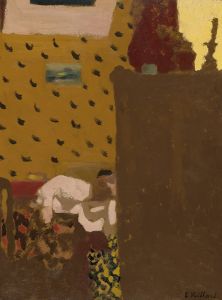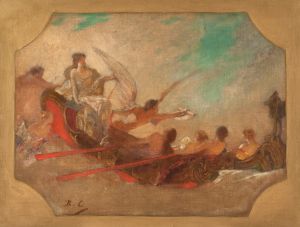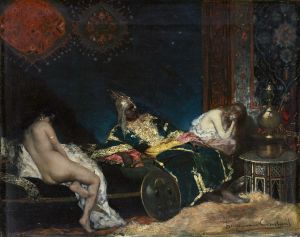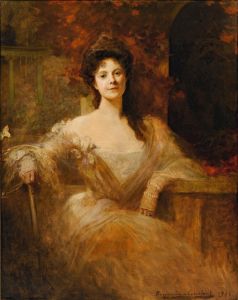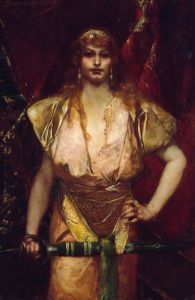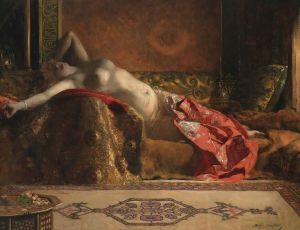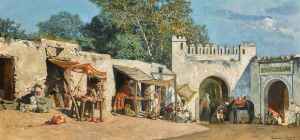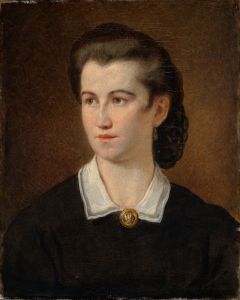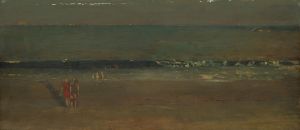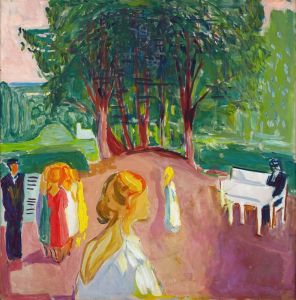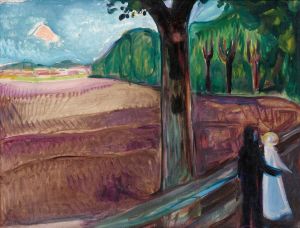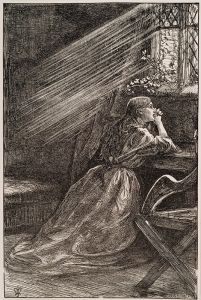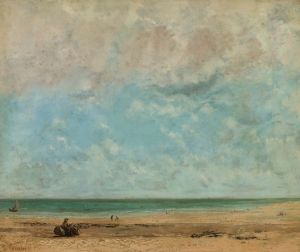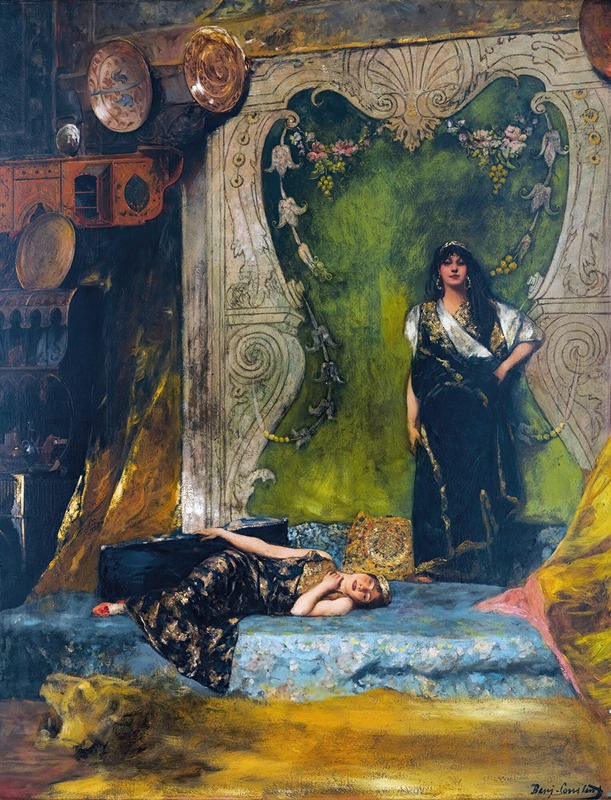
Afternoon Langour
A hand-painted replica of Jean-Joseph-Benjamin Constant’s masterpiece Afternoon Langour, meticulously crafted by professional artists to capture the true essence of the original. Each piece is created with museum-quality canvas and rare mineral pigments, carefully painted by experienced artists with delicate brushstrokes and rich, layered colors to perfectly recreate the texture of the original artwork. Unlike machine-printed reproductions, this hand-painted version brings the painting to life, infused with the artist’s emotions and skill in every stroke. Whether for personal collection or home decoration, it instantly elevates the artistic atmosphere of any space.
Jean-Joseph-Benjamin Constant was a French painter and etcher, known for his Orientalist subjects and portraits. Born in Paris on June 10, 1845, Constant studied at the École des Beaux-Arts under Alexandre Cabanel. He became well-known for his vivid depictions of scenes from the Middle East and North Africa, which were inspired by his travels to these regions.
One of Constant's notable works is "Afternoon Languor," which exemplifies his fascination with Orientalist themes. The painting captures a moment of leisure and relaxation, a common motif in Orientalist art that often romanticized the exoticism and perceived opulence of Eastern cultures. Constant's work is characterized by its rich color palette and detailed rendering, which bring to life the textures and patterns of the fabrics and surroundings depicted in his paintings.
"Afternoon Languor" showcases Constant's skill in portraying the human figure and his attention to the interplay of light and shadow. The composition typically features figures in a serene setting, often reclining or engaged in leisurely activities, surrounded by luxurious textiles and intricate architectural elements. This attention to detail and the use of vibrant colors are hallmarks of Constant's style, which sought to evoke the sensory experiences of the places he depicted.
Constant's work was part of the broader Orientalist movement in 19th-century European art, which was characterized by a fascination with the cultures and landscapes of the Middle East, North Africa, and Asia. This movement was influenced by the increased contact between Europe and these regions through travel, trade, and colonial expansion. While Orientalist art is often critiqued for its stereotypical and sometimes inaccurate portrayals of Eastern cultures, it also reflects the curiosity and imagination of European artists of the time.
Throughout his career, Constant received numerous accolades for his work. He exhibited regularly at the Paris Salon, where he was awarded medals in 1875 and 1876. In 1893, he was made a member of the Académie des Beaux-Arts, and he was also appointed as a professor at the Académie Julian, where he influenced a new generation of artists.
In addition to his Orientalist paintings, Constant was a sought-after portraitist. He painted portraits of many notable figures of his time, including royalty and political leaders. His ability to capture the likeness and personality of his subjects made him a favorite among the elite.
Jean-Joseph-Benjamin Constant's work, including "Afternoon Languor," remains an important part of the Orientalist canon. His paintings continue to be studied for their artistic merit and as historical documents that reflect the complex interactions between Europe and the East during the 19th century. Constant passed away on May 26, 1902, but his legacy endures through his contributions to the art world and his influence on subsequent generations of artists.





